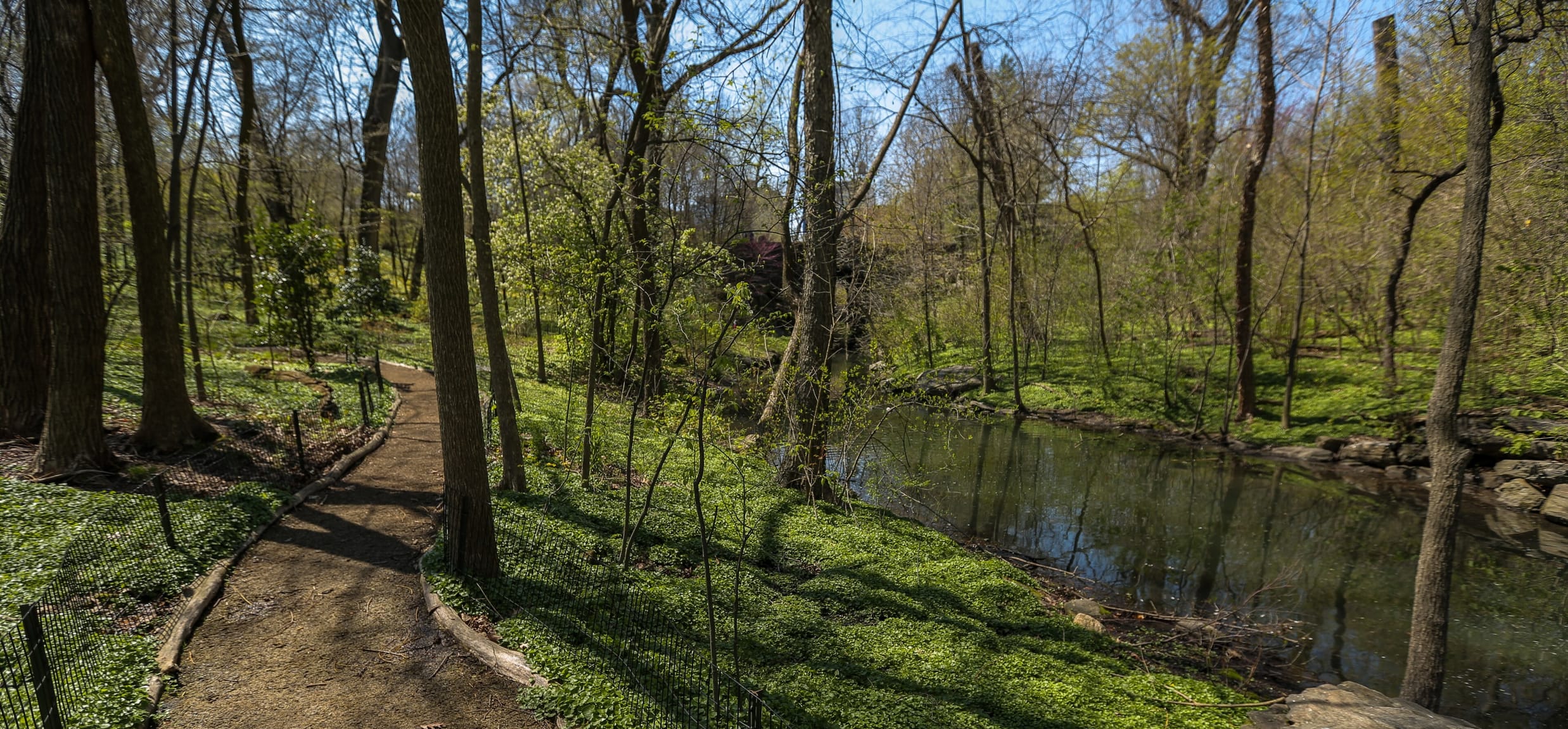Restoration
Restoration of the Ravine

Our restoration of the Ravine landscape included a complete reconstruction of paths and infrastructure, restoration of the Loch, addition of rustic features, and revegetation of the landscape.
The Ravine is part of a 40-acre landscape known as the North Woods. Winding through the Ravine is the Loch, a watercourse that flows through a series of pools and cascades before emptying into the Harlem Meer.
For much of the 20th century, Central Park’s woodlands (the Ramble, North Woods, and Hallett Nature Sanctuary) suffered from erosion; spreading of invasive species; degradation of the water courses; and deterioration of paths, infrastructure, and rustic features. More recently, a number of severe weather events have dramatically impacted the woodlands.

The Loch before restoration
As part of the Conservancy’s comprehensive effort to renew and sustain the Park’s woodland landscapes, the work at the Ravine included the removal of accumulated sediments from the Loch, a complete reconstruction of paths and infrastructure, improvements to the planting and irrigation systems, and the restoration and reconstruction of rustic bridges and stone steps.
The Conservancy’s approach to woodland restoration embraces two equally important and mutually reinforcing elements: the ecological value of the woodlands as a wildlife habitat and the cultural value of the Park as a scenic landmark.

Dredging work in the Ravine
Restoration of the Ravine included:
- Diversifying plantings, supported by expanded irrigation systems that ensure the ability to sustain the plantings
- Rebuilding of paths and drainage infrastructure
- Removal of accumulated sediment from the Loch to widen and deepen portions of the watercourse. This recreates a character-defining element of the historic design by re-establishing open pools of water without removing mature trees established in long-silted-in sections of the Loch. It also varies the depth of the pools to improve habitat complexity
- Restoration and stabilization of the edges of the Loch with a combination of boulders and vegetation
- Expanded access to the water’s edge at additional locations throughout the Ravine, with soft surface paths and a wooden walkway across a marshy area
- Restoration of rustic features, including stone steps and stream crossings
- Creation of a scenic overlook with rustic seating near the existing rustic wood bridge over the Loch’s cascade

Dewatering Glen Span Arch



